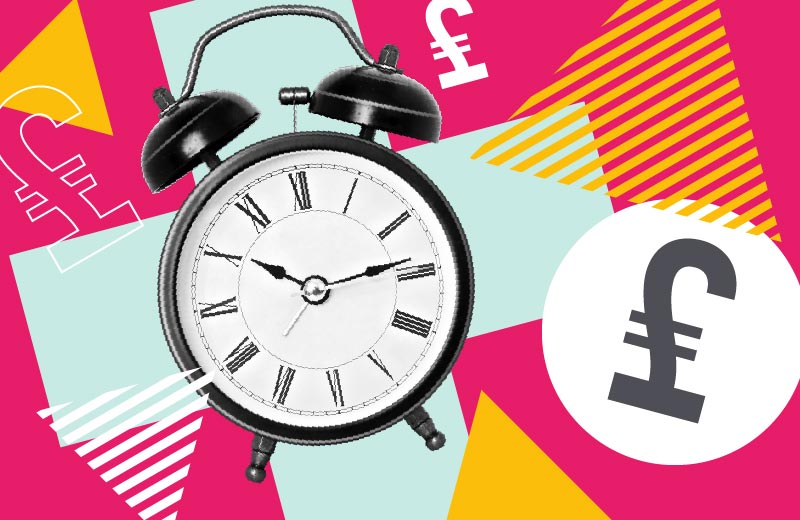

Very occasionally a project is approved without any amendments but this is not the norm! Even having learnt as much as possible from you at the start of the project, no one will know your brand and what you want to achieve better than you. Your feedback is therefore of great value and it's vital it's communicated to us clearly.
1. Ch-check it out
When considering what should be changed, refer back to the brief and what we agreed we're aiming to achieve at the start. If we go off-brief, the project can quickly become messy and result in poor quality results as it's no longer clear what we're aiming for.
If we do have to go off-brief, we'll need to agree a new one to keep us on track.
2. Customer is king
Remember we are designing for your target audience so “I don't like it” doesn't consider who we're trying help you communicate with. Aim to be objective not subjective. Think about how your ideal customer would view the design and what it says to them.

3. One shot
It's much easier and more efficient to do the changes in one go and easier to avoid missing anything if it's all in one email, rather than several.
4. Perfect form
If you have just one or two simple changes, sending them in an email is sufficient. However, if they're larger in number or we're creating a multi-page document like a report, leaflet or magazine together, our preferred way to receive these types of changes is by using Comments on the PDF we sent you. You can be precise with what needs to be changed and where. If there's new text to be included, we can copy from your comment, which saves time and enables us to be accurate. We can even tick off each change as it's done so we don't miss anything.

5. A picture paints a thousand words
Sometimes words fall short of what you're trying to convey. Visual references that show the colour, style or layout of what you're trying to achieve can be really useful to send with your feedback.
Yes, a photo of a scribble on a piece of paper is acceptable to show us what you mean! As long as it's big enough to see what's there and we can read your writing, don't be shy!
6. Clarity is key
It might go without saying but “it needs to pop” isn't particularly useful feedback. Do you mean it needs to have more visual impact? Which part of the design should draw the most attention? Aim to be specific.
In addition, tell us why you want those changes. If you say "this needs to be bigger", it's specific but it doesn't tell us the whole story.
"Can you make this bit of text more prominent – it should be the second most prominent piece of information on the page behind the headline" is much more useful. It may be that making the text bigger throws the whole design out of balance or there simply isn't enough room. Now that we know you want to make the text more prominent, we can try making the text bolder, a different colour, or make other elements on the page less prominent.

7. Teamwork makes the dream work
We're experts in graphic design and invest our time, experience and creativity into every project. Be open to our suggestions and insights.
If we're unclear with what you want to achieve with your changes, or there are multiple potential solutions, we may need to have a phone call or further discussion with you so we can work out what the best route is together. Often it's not time-effective or best use of your fee to explore all the possible solutions. We'll make a recommendation based on our expertise and what we feel is going to achieve what we set out in the brief.
8. Right on time
The last thing we want to do is rush and make a mistake so please make sure you allocate plenty of time for reviewing drafts, and respond promptly.
If there's an pre-agreed schedule in place, please stick to it and if there's going to be a delay for any reason let us know! We'll always try to accommodate you, including making alternative arrangements.
Even if there isn't a schedule in place, we'll need enough time to make the amendments, especially if they are large or complex. What seems like a tiny change can have knock-on effects and be hugely time consuming so we reserve the right to define how big the changes are and we'll explain this to you.
For example, adding a few lines of text to a magazine layout can mean that paragraph doesn't fit in that column anymore and the layout has to be adjusted. That can be fairly quick or surprisingly time-intensive.

9. I'm sorry, there's someone else...
We'd really love to treat each and every one of our beloved clients like they're the only one but it's not practical! We will always make your changes as soon as possible, and will follow any pre-agreed schedule, but also be aware we might not be able to get on to them straight away because we're giving our full attention to another client's project. Then, when we're back on to your project, you'll benefit from our full focus.
10. Extra extra!
There will be a set number of rounds of amendments included in our fee so if there extra changes, there may be an extra fee to cover it.
We're not going to be cheeky. If we've done two rounds of amendments as stated in the quote and you spot one minor text amendment that will take us literally a few minutes, we're not going to charge you for it.
But if that extra round of changes is significant, we'll let you know in advance there is likely to be an additional fee. We'll let you know how much and if there are any alternatives that will reduce the fee. The last thing we want is to present you with an invoice you're not expecting at the end, so we're always upfront when it comes to money.
A partnership made in heaven?
Feeling inspired? We'd love to help! We are a team of collaborators that enjoy nothing more than partnering with ambitious clients. Get in touch if you'd like to talk through your next project or get some advice.



